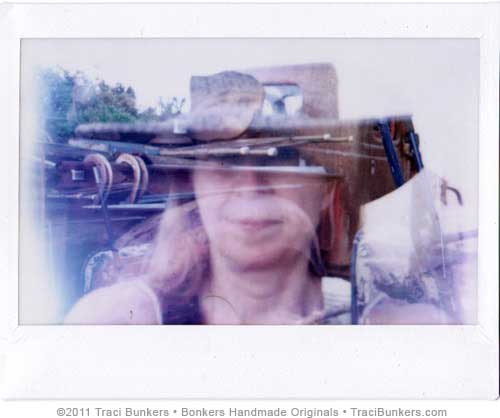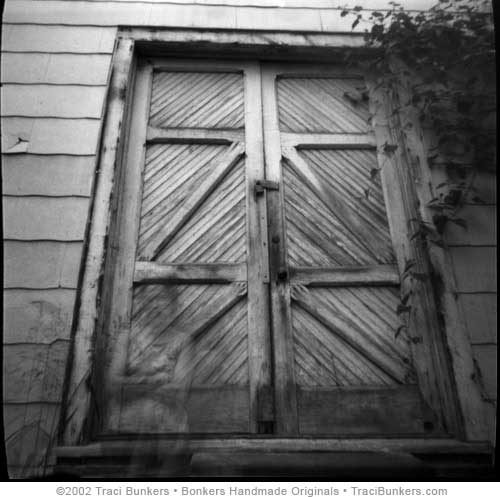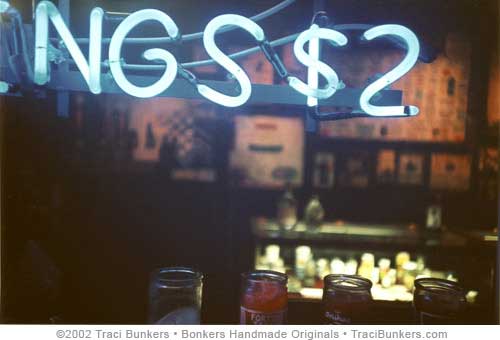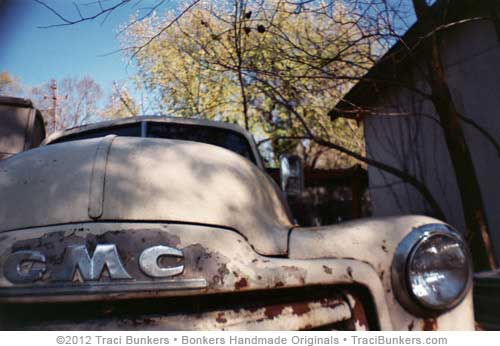
taken with my Olympus XA2
Leslie Herger, of Comfortable Shoes Studio, asked me if I’d like to join her and Yazmin (Sirens Idyll) in a “blog circle” to talk about how we use photography in our journals. We’ll be posting about that all week.
Since I love taking pictures, and I also love working in my visual journals, it’s only natural for me to combine the two. Plus, I feel using my own photographs in my journals and mixed-media work makes it much more intimate, adding to my personal expression.
I first became interested in photography back in junior high school. I was lucky that both my junior high and high school had excellent art programs. Along with other art classes, I took my first photography class in junior high, and also in high school and college, where I got my degree in graphic design. I remember in junior high, using a 110 camera with black and white film to shoot pictures of my hamster Jasper, sliding down her little hamster slide. Then in photography class, I learned how to develop the film and print it. I think because of this first connection with hands-on photography, I still have a fondness for 110 cameras, even though I’m not sure if the film is still available. (And it if it, it’s probably even harder finding a place that will process it.) I still have several 110 cameras in my collection, including a Velveeta Cheese camera.

In high school, I saved up and bought my first Nikon SLR. That’s when I started experimenting with photography, doing things like long exposures where I’d move objects or people in and out of the frame while taking the picture to create ghosty effects. Luckily the neighbor kids didn’t mind being my ghost models. I also started altering my photographs, so to speak, by making copies of them, cutting them up to create photo montages, and then coloring them in.

double-exposure, taken with my Fuji Instax wide
Probably the best photography lesson I learned, that I still live by, was from my college photography professor, Earl Iversen. He said something along the lines of “create the image in the camera, and not in the darkroom.” By that he meant to really look at the whole frame of what your are shooting, then crop or move around to get the composition you want, instead of cropping later in the darkroom. I think this has made me a better photographer because I’m really looking as I shoot, being present with it. With that said, I do love to take hip shots–where you don’t look through the viewfinder as you shoot–and I started doing those in college. But, I still don’t crop those. Whatever is in the picture when it is taken, stays in the picture.

taken with my plastic Holga camera, that I turned into a pinhole camera. I am in the bottom left.
I think because I got my early start with photography back when film was the only option, and with what my college photo professor instilled in me, I still shoot with an analog mind-set. I don’t like to alter my photos on the computer in Photoshop, I just like to use them as is. That challenges me to take interesting photos to begin with. Many of my photos look they like have been digitally altered. That’s because I have learned through experimenting, simple ways to get some really interesting effects as I take the picture. Most of the altering I do is “by hand”–either when I take the picture, or later when I use the image in my journals or mixed-media work.

taken with my iPod touch
A little over a year ago, I bought an iPod Touch–the 4th generation–which was the first model to have a camera. The camera is the whole reason I got it. I love taking pictures with it. Since it’s so small, I can stick it in my pocket or purse, and always have it with me. Even though I’m not into altering my photos on the computer, I love using the different photo apps on my iPod (and just like my film cameras, I have a lot of them). It’s pretty easy and quick to see different effects by using different filters within an app. (Here’s a tutorial I wrote on how to use the Magic Hour Photo app.) So, I do have fun playing with those. But to me, it feels different than altering them on the computer. I never had the patience for digital photo altering. So maybe the difference for me is the speed and ease. But I have to say–even with all of the cool photo apps, you still have to take a good photo to get a good photo. If your composition isn’t good, then an app isn’t going to fix that. (I was channeling my college photo professor just then.)

taken with iPod touch and hipstamatic app
Because I love photography and cameras, especially cameras considered “toy cameras” that give interesting, unexpected, and uncontrolled results, I have a lot of cameras. And by a lot, I mean a LOT. Hold on, let me go count them. You might want to go get a snack, because this could take awhile.
Ok, I’m back. I’m sure I missed some, and I didn’t count the “cameras” that are pinhole cameras that I made out of cans, altoid tins, and what-not. I have about 117 cameras. That includes my parent’s folding polaroid camera, many polaroid cameras that I turned into pinhole cameras, Diana cameras and different clones, Holgas, plastic cameras that I got at the dollar store, lots of cameras that I couldn’t ever pass up at the thrift store, Russian cameras that I got way before the Lomographic Society ever started selling over-priced cameras based on Russian models, vintage cameras, plastic cameras that I put together from kits, and all of the cameras I took apart and Frankensteined into other cameras (and all of the extra parts that my cats knocked under the couch). I can’t remember if that includes my fancy Nikon D500 DSLR that I use to shoot my artwork. So there you have it. As I said, I have a lot of cameras.

taken with my lomo LK-A
Which one is my favorite? Which ever one I’m using at the time. Although I am a very devoted and monogamous person in a relationship, that is not the case when it comes to my cameras. I love them ALL. But I do have my favorites, for sure. And I use different ones for different reasons. But, since I have so many, that would take forever to go through. So the photo shows a good mix of some of my on-going favorites. A few of these are new to my camera family.

The red one is a Recesky Twin Lens Reflex Camera that I put together from a kit. I got it last summer right before I went on my vacation to New Mexico. It takes dreamy looking photos where part of is in focus, and part of it is softly blurred.

double-exposure, taken with my La Sardina camera
The la Sardina is my newest one. I bought it at Journalfest last year from Tracy Moore. What drew me to it was the ability to take double-exposures (I’m all about double-exposures). I’ve only shot one roll with it so far, so I’m still learning it’s lovely quirks.

taken with my la Sardina camera
The others are my Fuji Instax Wide (it’s like a Polaroid, so instant photos!), one of my Diana’s, a Holga
I turned into a pinhole camera, my beloved Lomo LK-A
(yes, it’s an original that was probably made before the people who started the Lomographic Society were even born and I paid about 1/3 what they go for now), and my Olympus XA2 (another camera with a cult-following that I LOVE). The Lomo & Olympus XA2 are my go-to film cameras. I always have black & white film in one and color in the other.

taken with my iPod touch and hipstamatic app
Part 2 of this series will show how I’ve used my photos in my journal pages. Please check out Leslie Herger’s blog & Yazmin, AKA Sirens Idyll’s blog, to see their take on the subject.

What a fantastic post! I can see that this is one I’ll have to come back to read over again as there’s so much there to feed the mind – thanks Traci
Thanks Wendy! I was supposed to post this yesterday, but when I was almost done with it (yesterday), my web site went down and NONE of my post was saved. So I had to redo it ALL today.
I knew if anyone should chime in on this subject it should be you. Thanks for the great post!
Hi Traci,
Great series, thanks!
If you use different film cameras, do you find that you have different cameras sitting around for lengths of time with unfinished film in them? How long does it take you to use up a roll of film?
Dusty, Yes, I have a lot of film cameras sitting around with unfinished film. Because I have so many cameras, sometimes the film can sit in it for a year! That usually doesn’t happen, but recently I had some film processed after I finished the roll . . . and part of it was from a year before. It’d always a fun surprise!